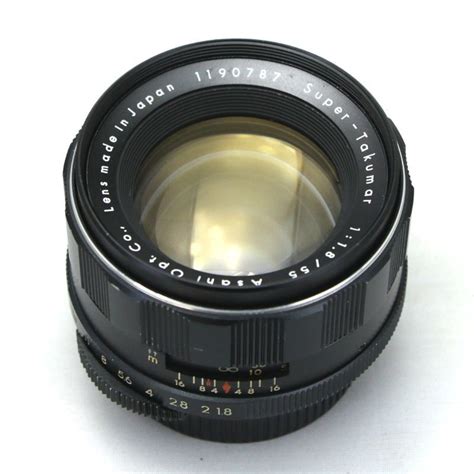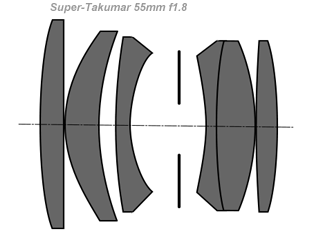The Lens details of a series of images taken by Steve Cushing on mirrorless camera.
Fitting is a 42mm mount with a 45.46mm
Flange Distance - this lens will fit and achieve focus to infinity mirrorless cameras and on most DSLRs.
History
So how did Japanese companies take over from the early German companies?
After the war, with many plants bombed and the Russians taking over East Germany, production cost for making lenses were a lot cheaper in Japan. Even before the war German optics companies started to partner with Japanese companies to manufacture optic lenses used in industry and in cameras. Japan as one, if not the only industrialised Asian nation in the world at that time, had the capability and the cheap labour to entice German manufacturers to move some of their production there. Similar to what is happening right now with China.
Together with this and a new post-war Japanese law and export control system, Japanese optics companies were effectively out of the business from military purpose optics for long time into the future. So, a company that was making gun sight for fighter plane or war ships optics for battleship had to start competing on civilian market to survive or too close down. There was no carry on as normal option for them.
European manufacture did not suffer this problem as much as Japanese did, as they still had lucrative military optics markets that grew even more as cold war kicked in. Even decades after the Japanese started to return to scientific with a partial return to military optics market, they still had to make the majority of their money in consumer, industrial, or medical optics market. Another advantage Japan had was they could use military developments for domestic products. Autofocus technology for example were really designed for the military so this was quickly adapted for civilian purpose in Japan, but remained secret in the rest of the world as it was used for military purposes and companies were not permitted to use it outside of these military fields.
The Japanese soon became so adept at making advanced camera lenses, originally for the Germans and then for their own domestic use, that companies like Nikon, Olympus, Minolta started. Canon was an off-shoot of Nikon. And so, the Japanese came to dominate the camera as well as the lens market. The Germans still have Leica of course which is considered the most expensive camera system in the world.
Japanese lenses can be divided intro entry level third party lenses, made by Soligor, Revuenon, Vivitar, Coslinar and others, mid range lenses made by smaller manufacturers, such as Makinon and Chinon and premium lenses, such as those made by Asahi Pentax and Fujifilm.
Other premium manufacturers like Canon produced lenses in their own native mounts others include Olympus, Minolta and Mamiya. Japanese lenses are considered the most reliable of these vintage lenses, with Asahi Pentax Takumar series coming on top of them all.
This LensThis lens was made in Japan. There are a number of different versions of the lens, with names such as the original ‘Super’, the SMC, and the Super-Multi-Coated. The first lot of Takumar 55mm f1.8 lenses date back to the late 1950s and were known simply as that: Takumar 55mm f1.8. In later versions there are slight variations such as the material of the focus ring, number of aperture blades, and the type of coating, but the main difference is found between the original 8 element version and the others – which have different optical designs. Production of the lenses ended in the mid-1970s.
Takumar is the name that Asahi Optical gave to its lenses, notably but not exclusively those for its own SLR cameras. Named after the Japanese-American portrait painter, Takuma Kajiwara. In the years that followed, the Asahi Optical Co., Ltd. became what we now know, generally, as Pentax, which is now itself a subsidiary of Ricoh.
The lens used here is one of the earliest versions of the lens made with an unusually high number of elements (8) in an effort to try and ‘one-up’ Zeiss, who were regarded as the best lens makers in the world at the time. Pentax managed to achieve their goal with the Super Takumar, but went on to reduce the number of elements in the so-called ‘Planar Killer’ to 7 in later iterations, in order to make its continued production more financially viable.
The Super Takumar is a 50mm f1.8 lens used here was released by the Asahi Optical Co. in the 1960. It has garnered something of a legendary reputation, and is known for its sharpness, bokeh, and propensity for flare. It was inexpensive, is solidly built, and give good image quality with plenty of character.
Lens In Use
- The image quality of the Super-Takumar 55mm f1.8 has never been in question.
- Many users of manual focus lenses rate it among the best vintage lenses commonly available; especially when the price is taken into consideration too.
- It is radioactivity. A yellowing of the glass is a sign of this. The radioactivity comes from the use of such compounds as thorium oxide (me neither) in the construction of the lens.
- You can tell the original 8 element version of the lens by the placement of the vertical red line in relation to the red diamond on the barrel. If the red line is to the right of the 4, it is the earlier, and rarer, 8 element version. If it appears to the left, then it is the later 7 element version.
- The focus ring seems to be reversed from most other manual focus lenses That’s not that big a deal in of itself, but it can definitely throw you off when trying to quickly manually focus – especially after a few libations.
SummaryWonderful lens, well balanced, great bokeh and close focus distance. I enjoy using this lens.
For general information on lens design and lens elements go to the homepage
HERE





